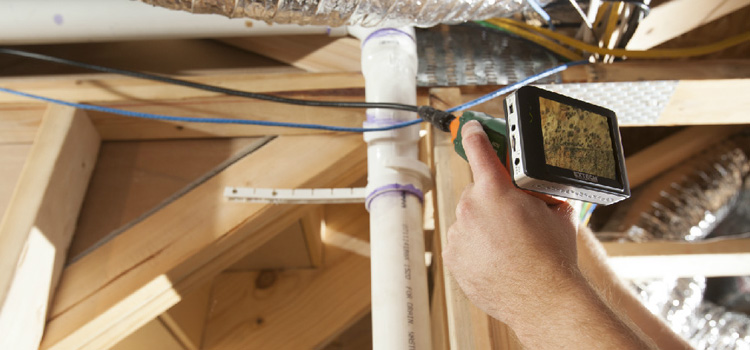Your Ultimate Overview to Message Mold Removal Techniques
In the aftermath of mold problem, understanding just how to successfully eradicate the mold and mildew and stop its reoccurrence is paramount for maintaining a healthy and balanced indoor atmosphere. From picking the appropriate cleaning and decontaminating techniques to implementing approaches for long-term mold prevention, each action in the remediation journey plays a vital function in making certain an effective outcome.
Comprehending Post-Mold Remediation Process
After finishing the mold and mildew removal process, it is essential to comprehend the post-mold removal strategies that are essential to guarantee a efficient and comprehensive clean-up. Once the mold has been removed, the following step involves cleansing and decontaminating the affected locations to avoid any type of regrowth of mold and mildew. This consists of using specialized cleaning representatives to clean down surface areas and eliminate any remaining mold and mildew spores. It is vital to dry out the area completely to dissuade the development of mold in the future (Post Remediation Inspection near me). Correct ventilation and dehumidification can aid in this procedure.
Moreover, carrying out a last assessment post-remediation is vital to make certain that all mold has been efficiently eradicated. This inspection should include a detailed aesthetic check along with potentially air sampling to confirm the lack of mold spores airborne. If the assessment exposes any type of remaining mold, extra remediation may be essential. Lastly, informing owners on safety nets such as managing dampness degrees and quickly dealing with any water leakages can aid maintain a mold-free environment.
Efficient Cleansing and Decontaminating Approaches

Avoiding Future Mold And Mildew Growth

Relevance of Appropriate Ventilation
Correct air flow plays a crucial duty in stopping dampness buildup, an essential element in mold and mildew development within indoor environments. Effective ventilation systems assist eliminate excess moisture from the air, reducing the opportunities of mold spores discovering the dampness they require to spread out and sprout. Without adequate ventilation, interior spaces can become a reproduction ground for mold, leading to possible health and wellness dangers and structural damage.
By guaranteeing proper air flow, ventilation systems can additionally aid in drying damp locations quicker after water damage or flooding cases, additionally hindering mold and mildew development. Post Mold remediation cleaning. Precede like washrooms, cellars, kitchen areas, and attic rooms where dampness degrees tend to be higher, installing and maintaining effective ventilation systems is important in protecting against mold and mildew infestations

Surveillance and Maintenance Tips
Given the essential role that appropriate ventilation plays in avoiding mold and mildew development, it is critical to establish effective monitoring and maintenance ideas to make sure the continued performance of air flow systems. Normal examinations of ventilation systems ought to be carried out to look for any indicators of clogs, leaks, or malfunctions that can impede correct air movement. Tracking humidity degrees within the residential or commercial property is likewise critical, as high humidity can add to mold and mildew growth. Setting up a hygrometer can help track moisture degrees and sharp property owners to any spikes that might call for focus. Furthermore, making certain that air filters are routinely cleansed or changed is essential for preserving the efficiency of the air flow system. Executing a schedule for routine upkeep tasks, such as air duct cleaning and cooling and heating system examinations, can help protect against concerns before they escalate. By remaining proactive and attentive to the problem of air flow systems, homeowner can efficiently mitigate the threat of mold and mildew regrowth and keep a healthy and balanced interior setting.
Final Thought
In conclusion, post-mold removal methods more helpful hints are important for making certain a clean and safe environment. Recognizing the procedure, implementing efficient cleansing and decontaminating techniques, avoiding future mold and mildew development, keeping correct air flow, and normal surveillance are all critical actions in the remediation process. By adhering to these standards, you can successfully remove mold and mildew and prevent its return, promoting a healthy living or functioning space for all owners.
In the aftermath of mold invasion, recognizing just how to properly navigate to this site remove the mold and mildew and prevent its reoccurrence is paramount for preserving a healthy and balanced indoor atmosphere. When the mold has been gotten rid of, the following step entails cleansing and sanitizing the affected locations to prevent any regrowth of mold - Post Mold Remediation. After getting rid of noticeable mold and mildew growth, it is critical to clean up all surface areas in the damaged area to eliminate any type of staying mold spores. To even more enhance mold avoidance procedures, it is essential to address underlying problems that at first led to mold and mildew growth.Provided the critical function that appropriate air flow plays in protecting against mold development, it is critical to establish effective monitoring and upkeep suggestions to make sure the continued functionality of air flow systems